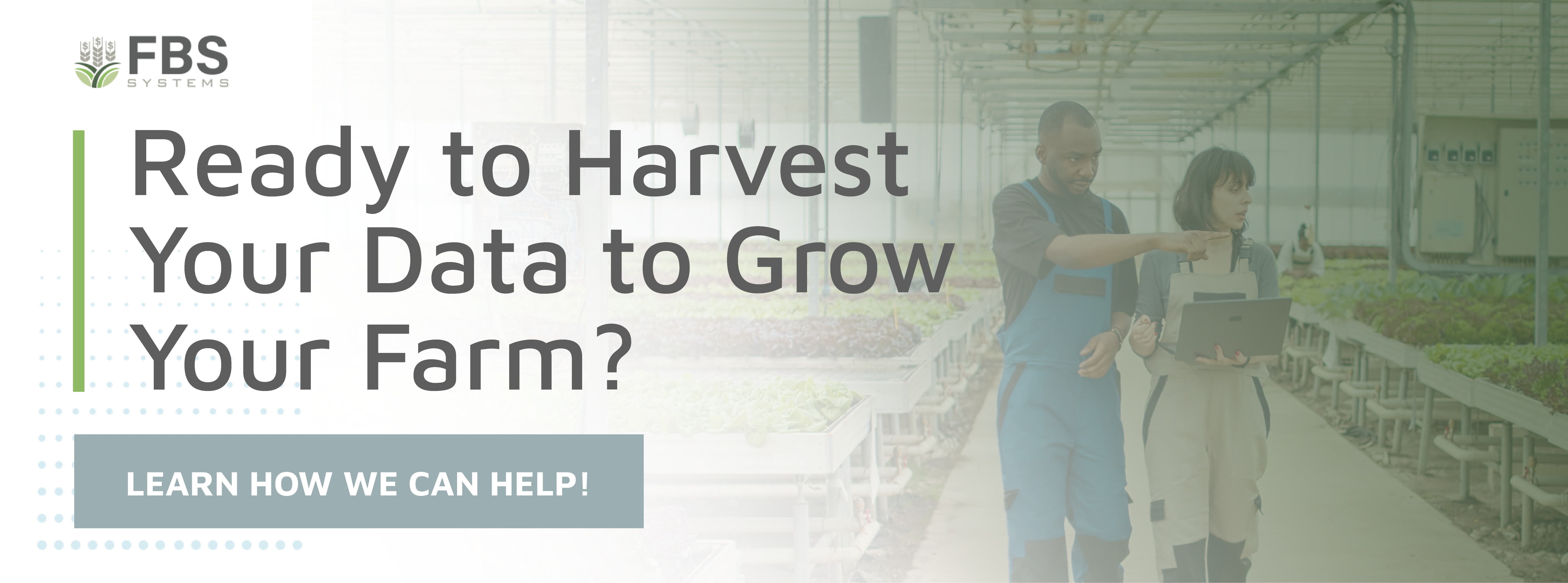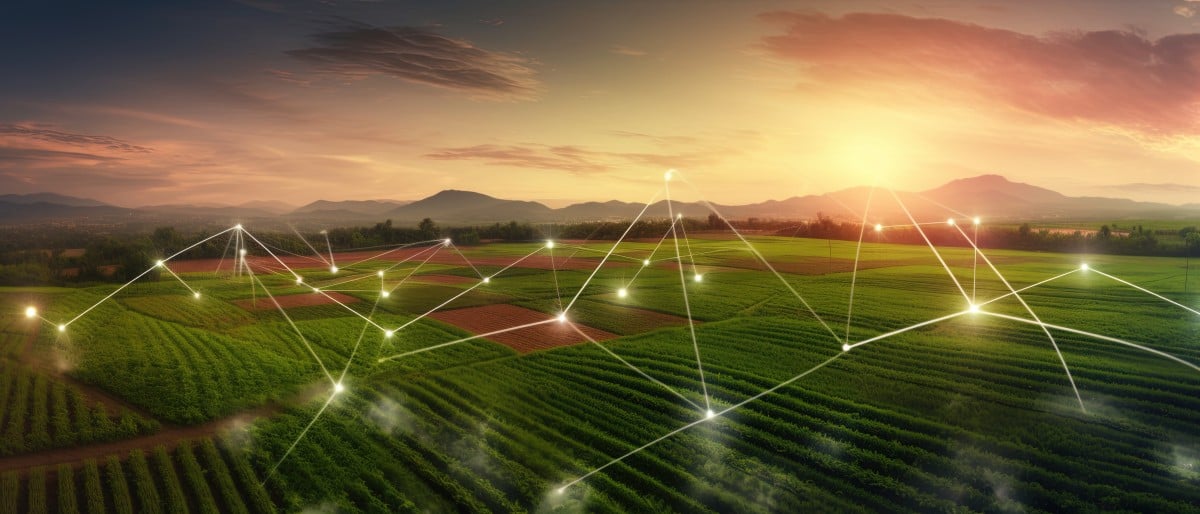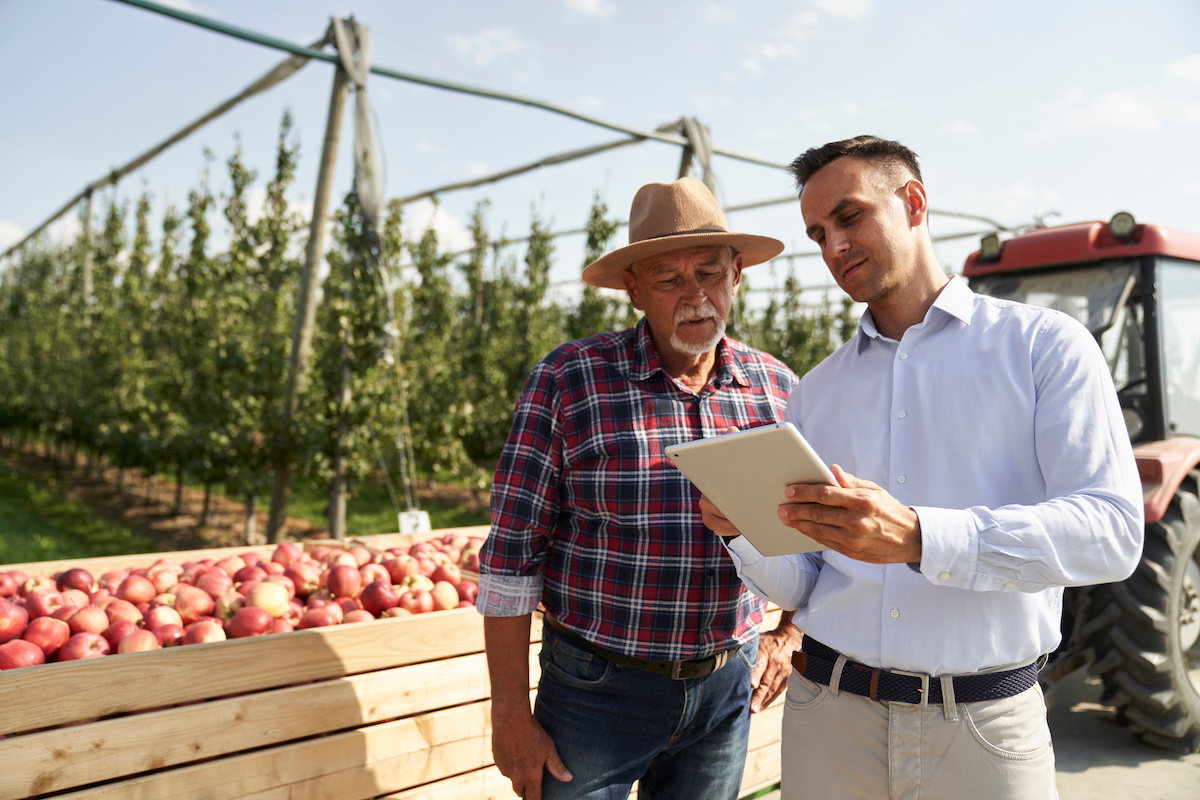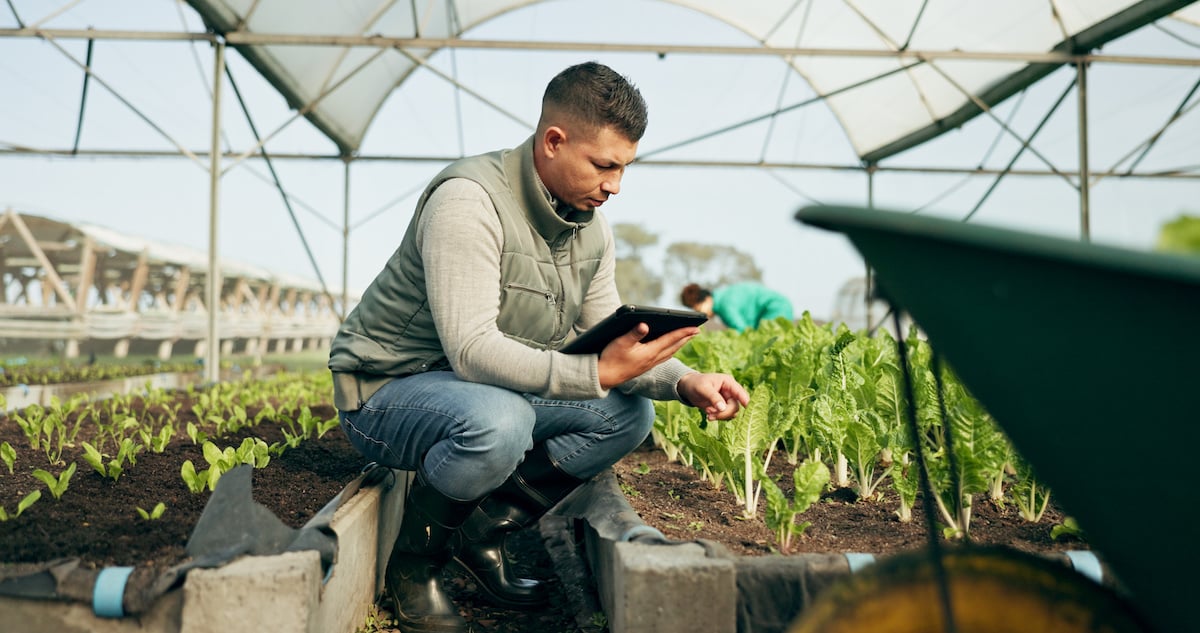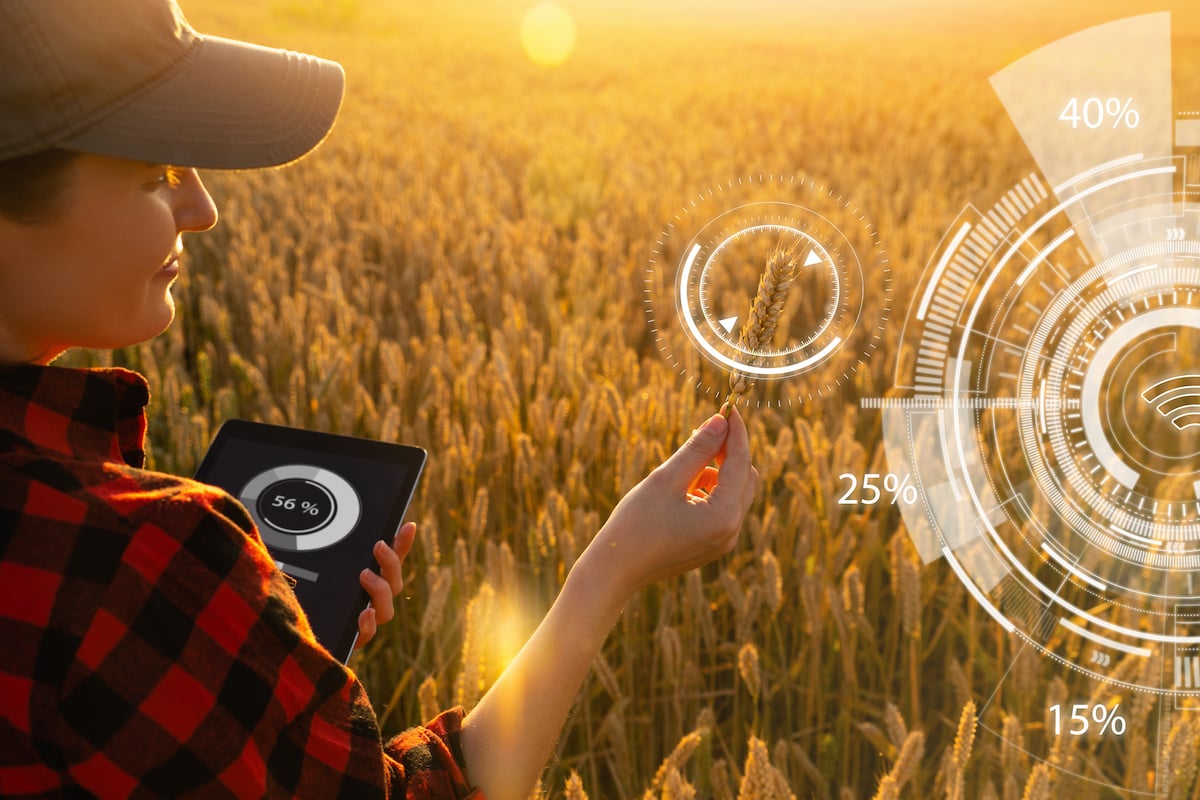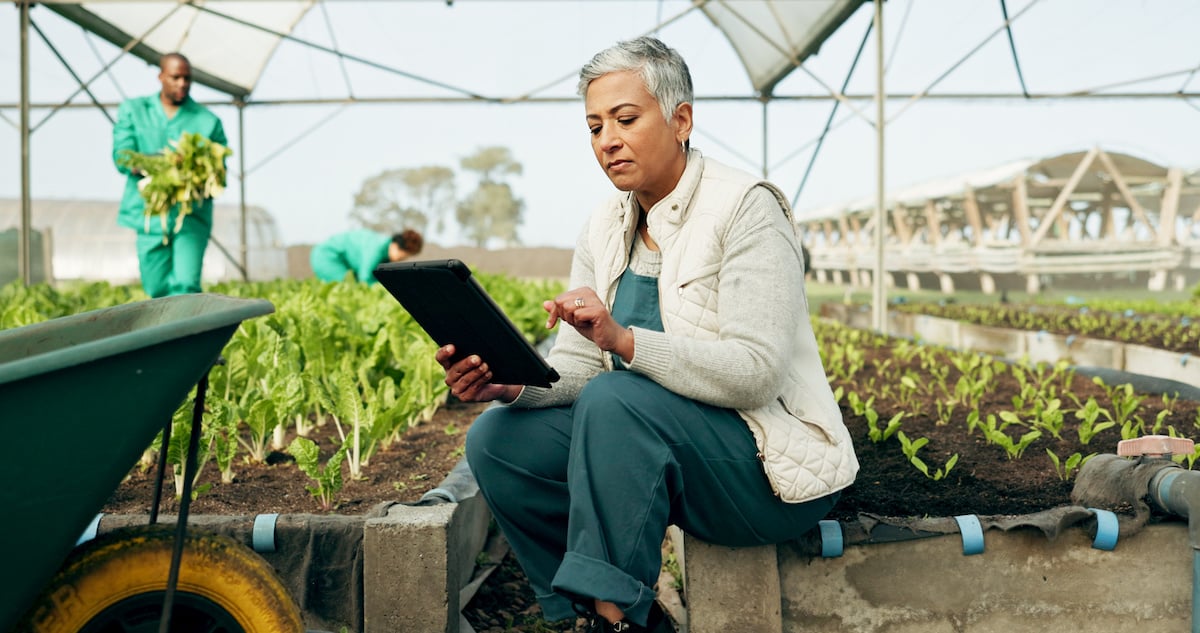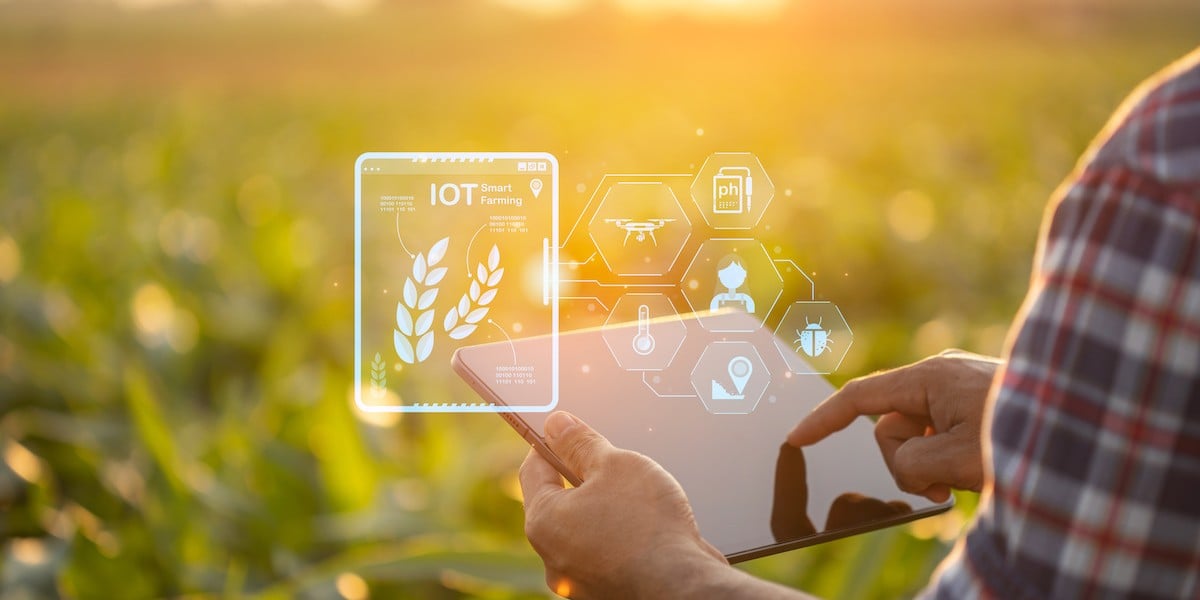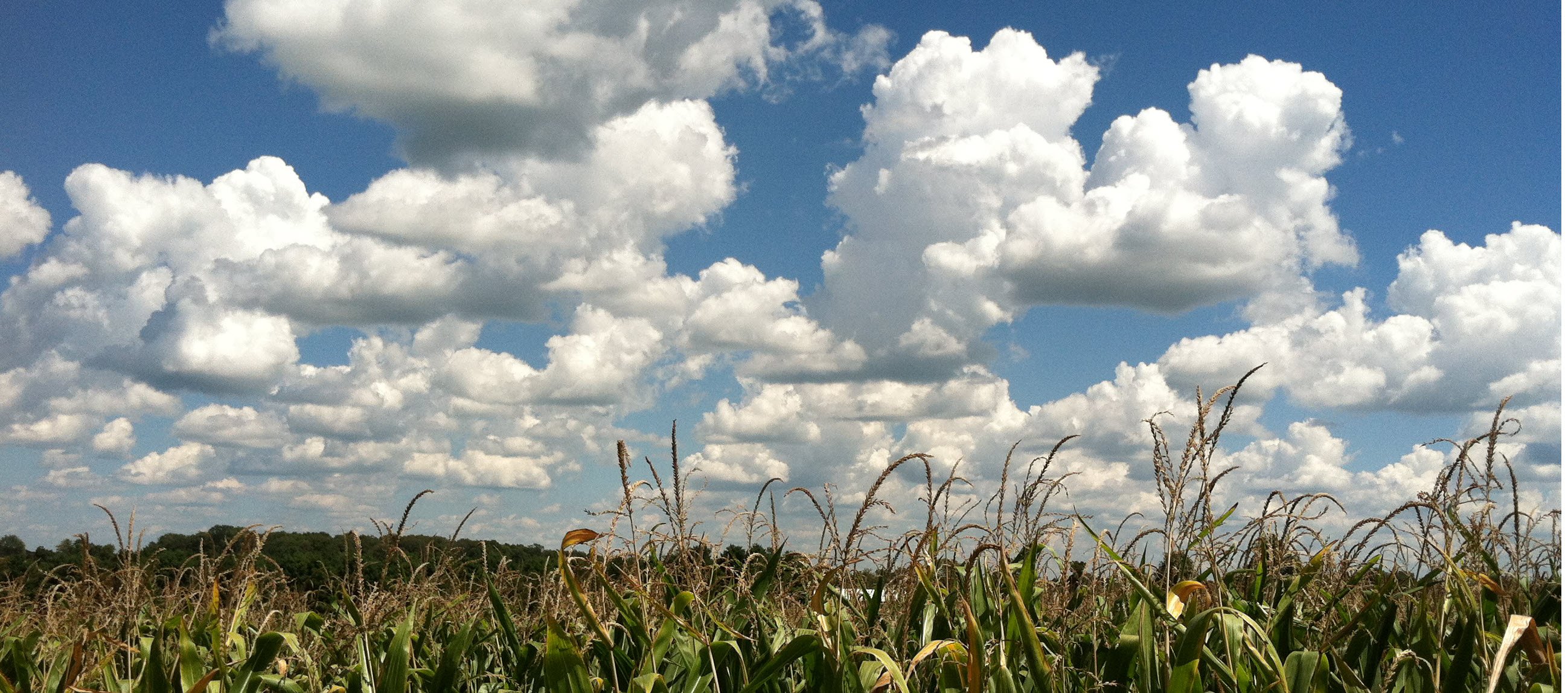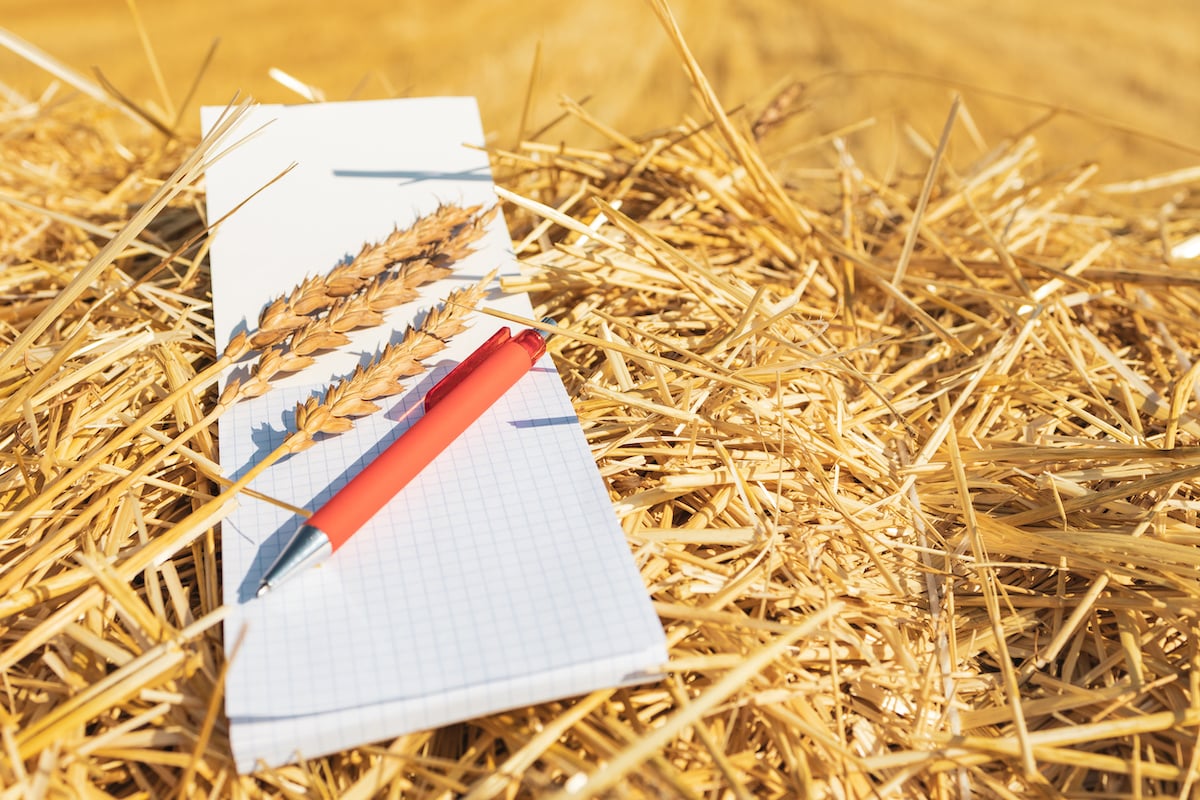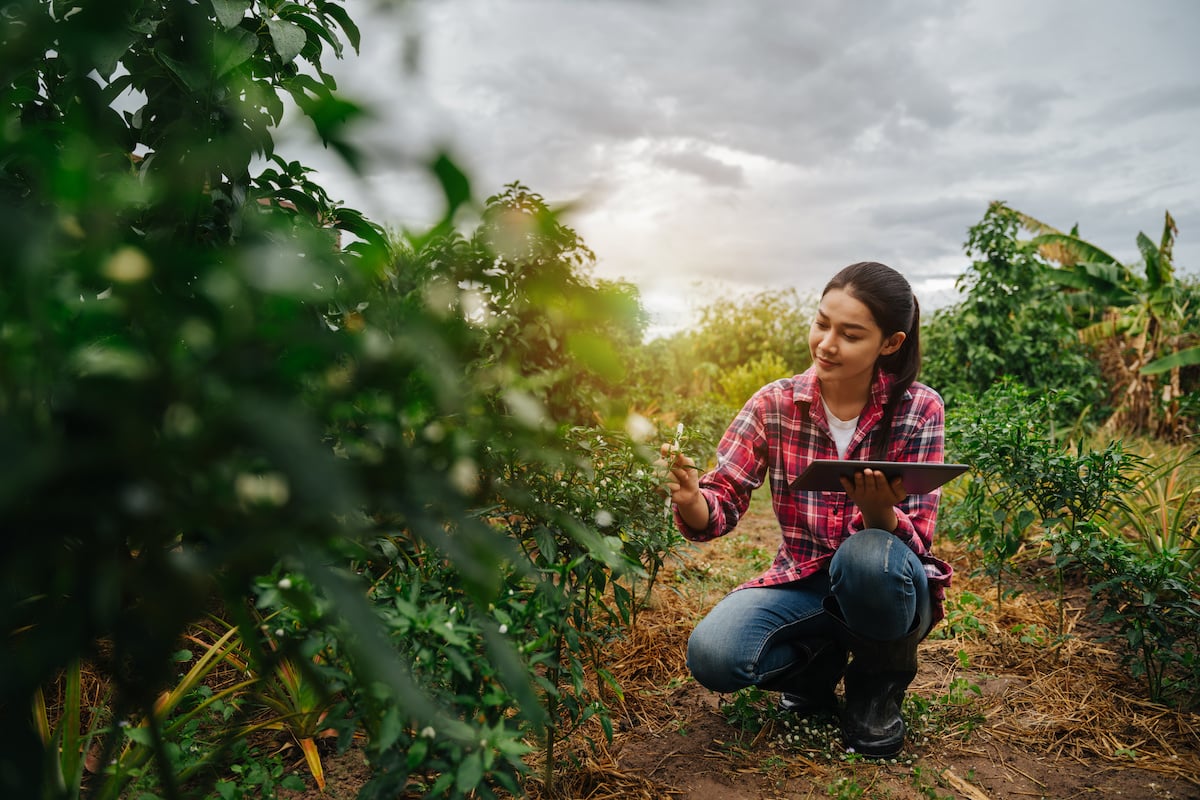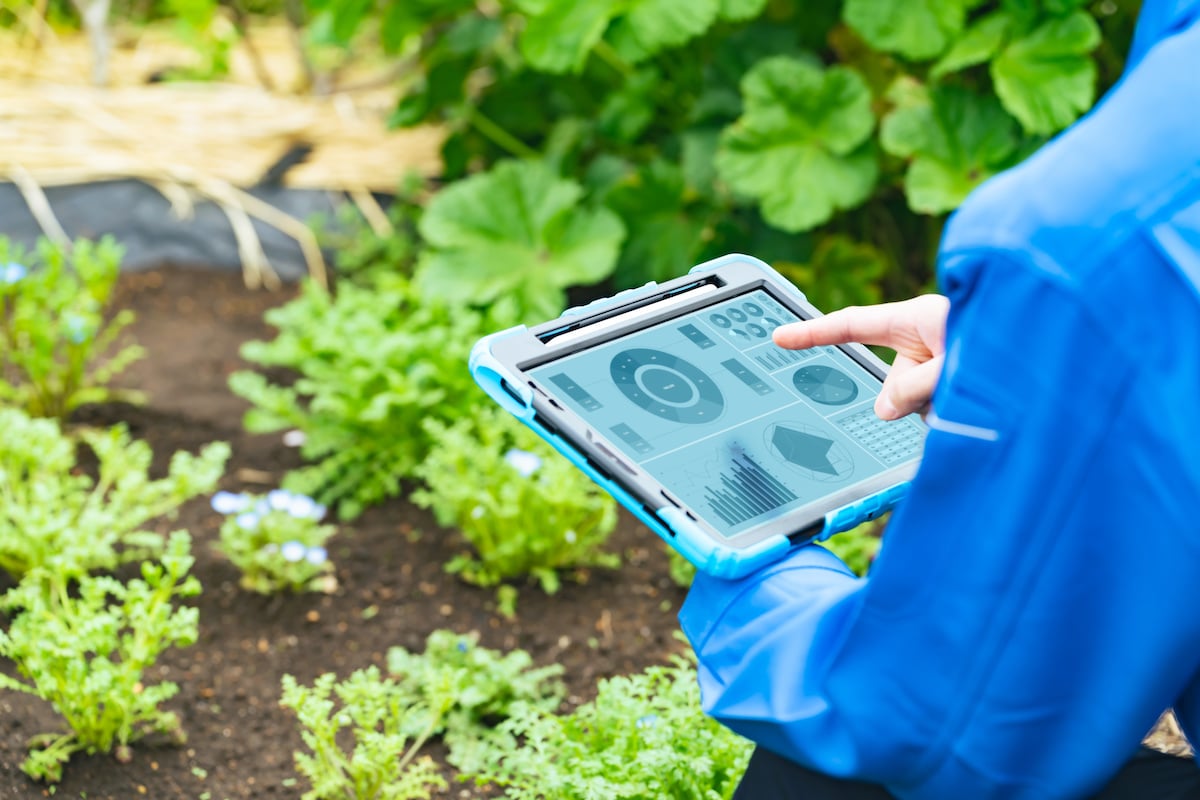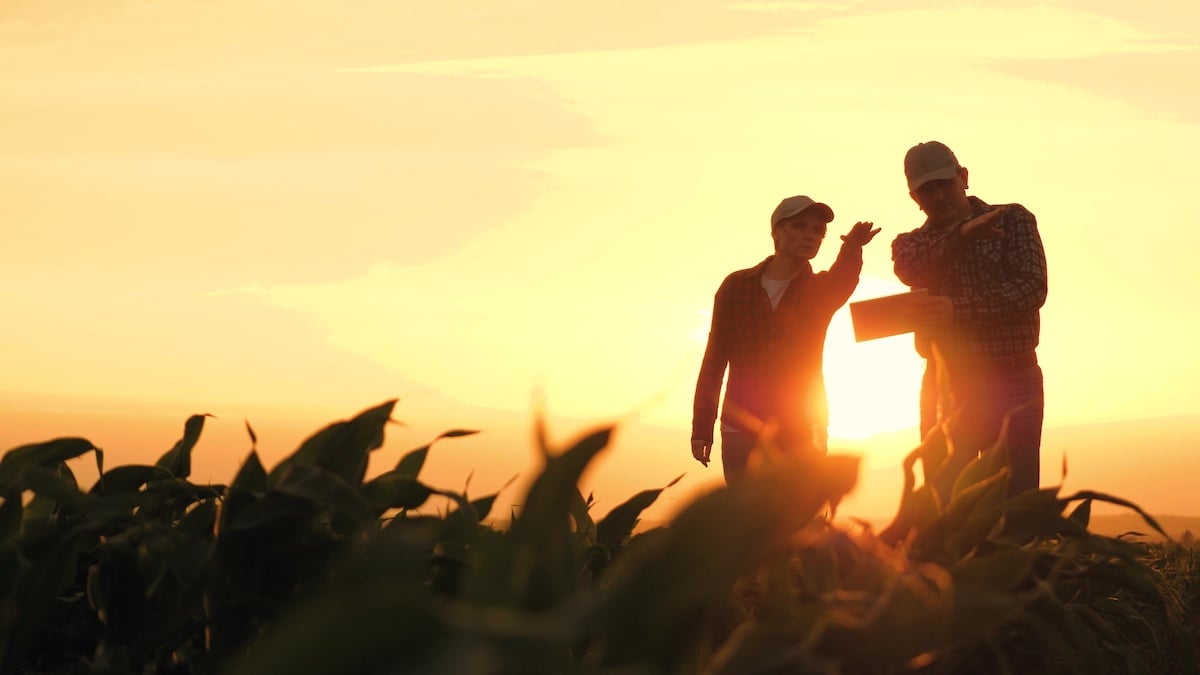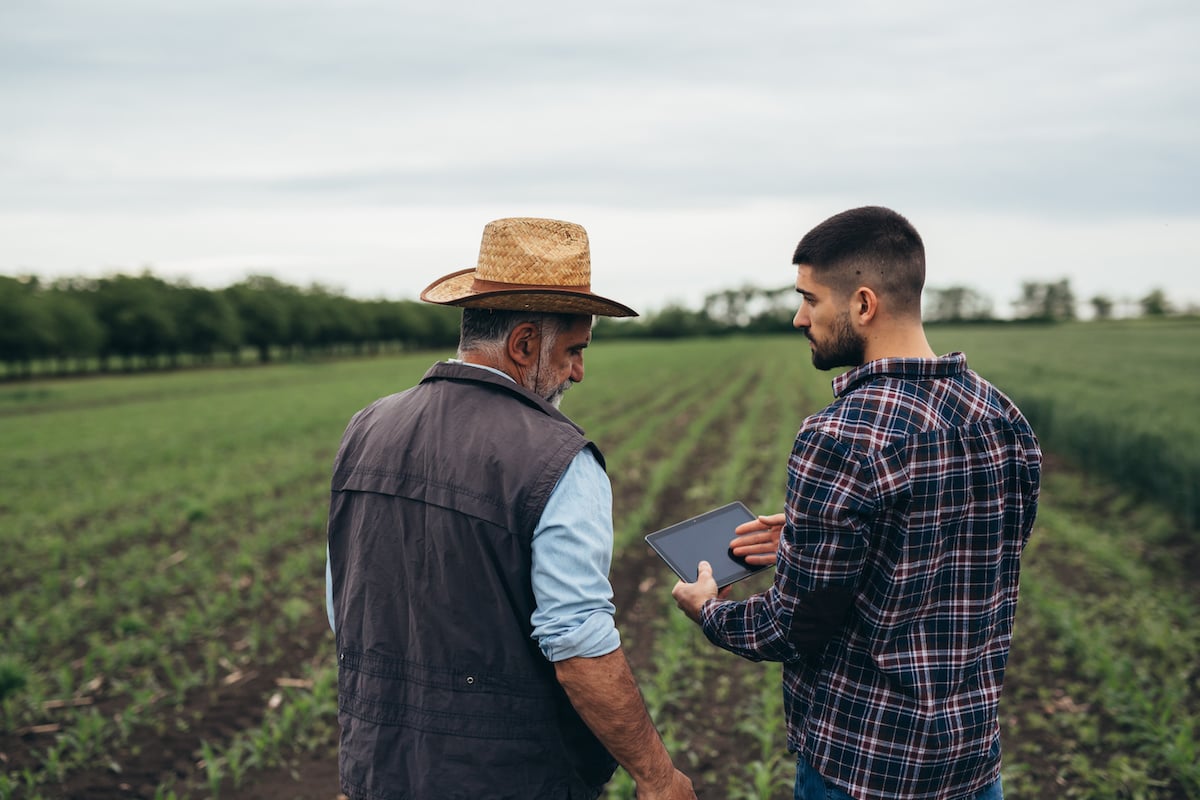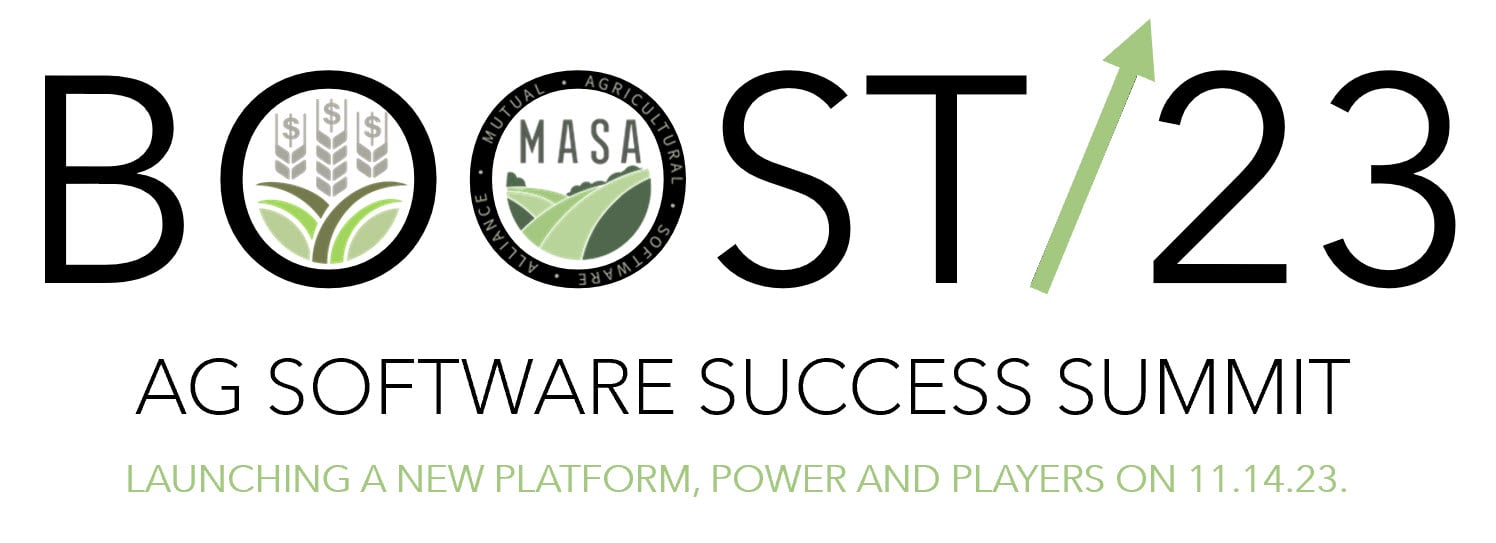Artificial Intelligence (AI) has left no stone unturned. Nearly every industry is talking about the ways it will impact them and what opportunities exist for how it can revolutionize the way we build and grow businesses. Farming is no different. Still, we’re an industry that’s notorious for slow adoption of technology and so how quickly will AI impact farming? How will we see it integrated?
The truth is, if you’re using ag tech now, at all, then you’re likely being slowly introduced to the capabilities of AI in agriculture. Contrary to science fiction, AI isn’t HAL or I, Robot and, frankly, it’s really not any more complex than the tech tools you’re already using. In fact, AI in agriculture will likely help you leverage those tools, analyze farm information more quickly, and make data driven decisions to improve farm profitability.
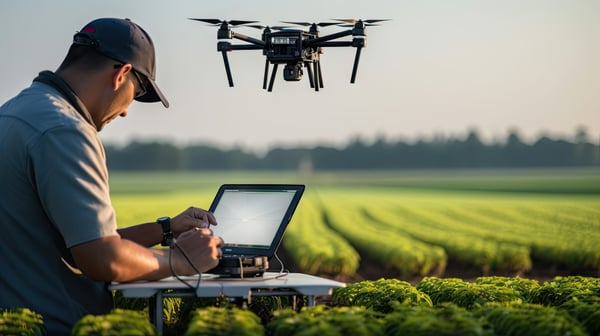
How AI is Used in Farming
As farmers, your primary goal is not only to increase yield but also profit. Understanding cost centers, profit centers, and what other factors are impacting crop or livestock yields (from fertilizer to feed) is, therefore, essential. Regardless of the size of your operation, that means handling, on a daily basis, a lot of data and being able to aggregate it in meaningful ways.
Gathered data then must also be analyzed and, as we all know, no farm, no crop, no product cycle stands on its own. In short, a data set doesn’t exist in a vacuum. As farm managers and operators, we know current data must be compared to existing data sets from previous production cycles as well as, potentially, from other farms. We benchmark to better understand how what we’re doing is working in comparison to what others are doing and how their efforts are being rewarded (or not).
All of this is to say that while a good part of work happens out in the field, a holistic view of your farm marries the field to the back office. But, the work in the field and in the barn doesn’t adhere to your timeline and so, often, you’ll need to be able to analyze this data fairly quickly in order to make decisions that will impact your next production cycle. This is where AI shines.
Risk management
Risk management is a vital component to profitability. Changes in the environment including but not limited to weather can impede natural growth processes; however, that’s not the only risk when it comes to farming. Financing and changes in interest rates, a volatile marketplace, government regulations, and other unforeseen factors can require shifts in strategy, but a farmer’s best defense is preparation. Being prepared requires the aforementioned data, the ability to spot trends, make predictions, and keep your operations lean. To do the kind of data analysis that helps you make those decisions without AI could take a full season and by then, it may be too late to adjust. AI speeds up that process helping you be prepared for whatever may come.
Production analysis
Wouldn’t it be great if you could gauge existing factors, weigh them against previous conditions, and help predict crop/livestock success? Profit depends on production.
Analyzing the factors that impact production can be complex and time consuming. Afterall, you may be responding to a wide variety of issues such as pests, soil health, weeds, crop/animal health which can then all impact profit. Again, gathering all that data, inputting it (error free), and then taking the time to analyze its significance as compared to other data is time consuming. Further, human error can misrepresent your current conditions and impact production analysis.
Agricultural AI, in this case, can help not just with data aggregation and analysis but even with collection. As we discussed in an ag tech piece, from sensors and drones, you can monitor, test, and treat everything from growing conditions and soil quality to crop health. And, better yet, with AI assisted technology you can gather that data without ever having to go out to the field itself, saving even more time and making your efforts even more efficient and accurate.
Harvest Planning
In much the same way as AI can help you understand environmental conditions, that same data can help you understand when those conditions are best for both planting and harvesting. Harvest planning is far easier when you understand not just the length of the growing season but also how to maximize that and reduce crop loss and destruction. In fact, AI tools can help you know days in advance when peak harvest will be allowing you to allocate the resources you need to maximize your yield.
Digital Twins
Perhaps one of the most promising uses of AI in agriculture is allowing farmer managers and owners to create “digital twins” and play out “what if” scenarios on digital farms that mimic existing land. Considering crop changes or more? Limit your risk with a digital twin and play out the scenario in real-time allowing farmers to limit risk.
Of course, much like other industries, we’re in the early stages of understanding exactly how and in what ways AI will influence agriculture and agricultural production. Still, even in these early stages, it’s clear to see some benefits.
The Benefits of AI in Agriculture
Despite the fact that we cannot yet envision all the ways AI in agriculture will change our industry or the way we farm, one thing is clear, those leveraging AI are already seeing benefits. In fact, there’s really not one area of your farming operation that won’t be impacted by AI and jumping on the “bandwagon” early may help give you leverage.
Farm managers can already take advantage AI benefits such as:
Real Time Data
Perhaps one of the biggest benefits being realized by farm managers and operators is access to real time data. Making adjustments to crops and livestock needn’t take days or weeks while you wait on data to be entered and then analyzed. Similarly, AI driven combines can adjust on the fly, saving valuable time (and crops) rather than waiting on an operator to get visual confirmation of a harvesting issue.
Additionally, AI enables farm managers to actively monitor factors that impact not just production but also profitability. Because you’re gathering real time data from multiple sources, you get a far more holistic view of your operation. That means you can adjust resources to enhance performance across the board.
Time Saving
In nearly every industry leveraging AI right now, one of the biggest perks is the time-saving. In the past, gathering data from the barn or field meant taking a hand, and time, away from production efforts. From production reporting to financial reports, AI allows you to speed up the reporting and analysis that drives data driven decisions. That saved time gets reinvested in operational support and reporting, even to financial stakeholders, is still accurate and on time.
Cost Effective
In some cases, there’s an initial investment in the tools that will let you gather the data AI relies upon, but the ROI can be quick. Real time data analysis allows you to see where you’re overspending and which profit centers aren’t delivering...and it can do it more efficiently and quickly than a human. As a result, you can make changes and shift your strategies to cut costs and increase profit.
Again, the time your team needs to gather data, report, analyze, and shift priorities is costly, not just in terms of human resources but also the potential for profit you could realize if those decisions were made more quickly. Further, you can reallocate your team to operation critical tasks.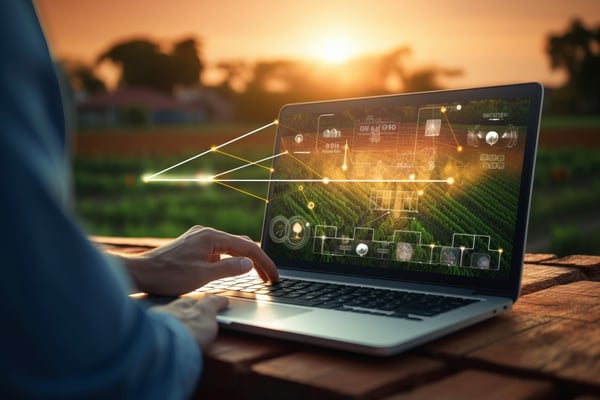
Grow Your Farm with Management Software Tools
As we said above, there are a variety of tools to help leverage AI on your farm and they don’t need to be technically complex. In fact, most companies who are leveraging AI to see the benefits we’ve discussed are simply automating time consuming and repetitive tasks. Similarly, they’re automating data collection, aggregation, and then farm financial reporting. They’re using AI to spot trends and plan for the future.
Prepping for AI
A farm ERP solution can help you start your farm’s digital transformation. As much as we love to rely on internally-developed manual records, the benefits of ag tech are profound and, when many of us are trying to run lean and improve efficiencies, improving your agricultural tech stack is just smart.
One of the primary benefits of an ERP solution for your operation is that you get the real-time data we discussed with complete integration of all the vital data points to help drive your decisions. Further, with the right solution, you’re ahead of the curve– an open-architecture platform based on the Farm Financial Standards, like the one provided by FBS, means you’ll be able to connect existing and additional AI tools.
Farm management accounting isn’t simple; it’s got some very real challenges. Among those is how you allocate costs across multiple profit centers to help determine profitability and trim costs. That’s time consuming. A farm ERP solution can help you do that more efficiently and effectively. Complex reporting for tax preparation? We’ve got you covered.
In fact, our farm ERP solution comes with extensive onboarding and unparalleled ongoing support including access to benchmarking groups allowing you to gauge your results and adjust your efforts. In fact, we’ll be doing a deep dive into AI in agriculture at our annual user conference November 14-15 to help our users get the most out of their existing software and future technological advancements.
If you’re looking to start employing tech improvements to improve your farm operations, let FBS Systems help. We’re a farm ERP solution for farmers, by farmers. Get in touch with us today and let’s get ag tech working for you.